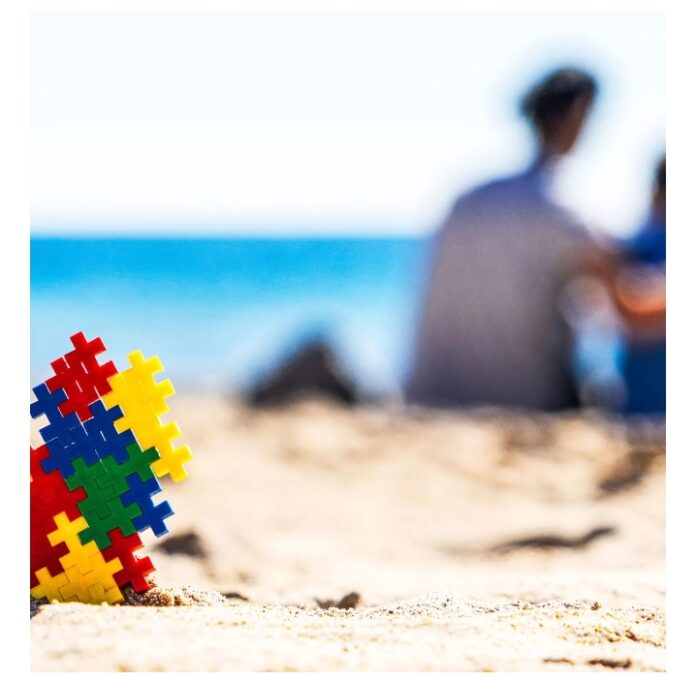Research shows that the non-autistic brothers and sisters of children with autism can face specific challenges at school, and teachers need to be alert to these, says Kelle Salle.
When my autistic brother and I briefly attended the same school, I was far too young to understand the impact his diagnosis would have on my school experiences.
His autism was very severe at the time. “Meltdowns” were common, and I was on the receiving end of negative reactions from peers who had witnessed these. Their responses left me feeling low and misunderstood – but my teachers were unaware.
While it is expected that the needs of autistic children are identified and met in schools, support for their non-autistic siblings is, as my experience shows, not always prioritised.
Recent research from Dr Georgia Pavlopoulou and her colleagues at the UCL Institute of Education in partnership with the Siblings Research Advisory Group found that non-autistic siblings growing up with an autistic brother or sister may be at increased risk for experiencing difficulties at school related to a lack of autism awareness and acceptance.
Although the research pointed to several positive experiences that come from interacting with autistic people, such as opportunities to practise self-regulation, it also highlights a need for schools to provide support for non-autistic siblings.
That applies to more pupils than you might think. According to the National Autistic Society, there are over 160,000 autistic pupils in schools across England, with over 70 per cent of those in mainstream settings. The number of siblings of these children is likely to be even higher than this.
So, what are the specific challenges that non-autistic siblings face? And what can schools put in place to make sure that these young people are as well supported as their autistic brothers and sisters?
5 Adjustments Needed In Your Classroom
How the increase in autism diagnoses affects schools
It’s time we all embraced the term ‘neurodiversity’
One reason why non-autistic siblings may experience difficulties in a school environment is because of the additional responsibilities that may be placed on them at home, says Dr. Rebekah Easton, clinical psychologist at Well Rooted Wellbeing. This can make it difficult for them to transition from one set of circumstances to another.
“Going from one environment where they are ‘keeping an eye’ on their sibling to another where they can play freely without additional tasks placed on them is something that non-autistic siblings will find challenging,” she explains. “Younger siblings in particular can pick up on the stress their parents may be under and decide themselves to take on additional responsibilities.”
This sense of responsibility can carry over into school, too. Almost a third of the non-autistic siblings who participated in the UCL study found themselves missing class on several occasions to aid teachers in supporting their brother or sister. The non-autistic siblings also felt that there was a need to “translate” for their sibling in order for school staff to improve their brother or sister’s experience at school.
This can create additional stress – with the non-autistic sibling worrying about their brother or sister when they should be concentrating on lessons.
It may also detract from school being a much-need place of respite from their home situation.
According to Clare Kassa, chief executive at Sibs, a charity that supports the siblings of disabled children and adults, that stress can also have implications for non-autistic siblings’ social relationships.
“They may feel like they have to look after their brother or sister at the expense of developing their own friendships,” she says.
Easton agrees that the impact can be significant here. Non-autistic siblings might worry about how they will be perceived by their friends, or find they have less time “to engage in free play and fun activities or the opportunity to build on peer relationships”.
This doesn’t only apply during term time; the UCL study found that school holidays also present challenges. The researchers point out that this means teachers need to be particularly alert to the feelings of non-autistic siblings when they return to school after a break.
Chrissa Wadlow, founder of SEND advocacy group Sunshine Support, suggests that this has to begin with establishing secure relationships at the very start of the year.
“Through connection, siblings will feel seen and understood,” she says. “Working with parents to this effect is vital.”
Working closely with parents will also help schools to understand the individual circumstances of each pupil, something that is essential for getting the right support in place.
So, what might that support look like on a day-to-day basis?
1. Make Dedicated Time For Non-autistic Siblings
The most important thing that schools should take into consideration is that support needs to be consistent in order to be effective.
“Making sure the sibling has someone to talk to at school who knows about their home life is important,” Kassa says.
One-on-one time with teachers may be beneficial as, according to Easton, not only does this “Provide children with the opportunity to form a good relationship with a trusted member of staff”, it also means they “Have time to focus on themselves, which could support their self-esteem”.
Wadlow agrees that dedicated time with a member of staff, either one-on-one or in small groups, is important.
“Non-autistic siblings [may] need help with regulating and understanding their emotions, but they also need to be heard,” she explains.
“Giving them a safe space to explore their worries and emotions is vital, whether it’s through group work or child-centred therapeutic sessions”.
2. Raise Awareness About Autism
Meanwhile, on a whole-school basis, raising awareness of autism can help to lessen some of the stigma that non-autistic siblings might feel, or reduce negative reactions from other pupils.
This can be tied to national awareness events, or seeded throughout the curriculum in broader teaching about neurodiversity.
“Having conversations, lessons or planning activities surrounding visible and invisible differences will be helpful – this can help adults and young people in feeling more comfortable talking about differences,” says Easton.
Kassa adds that the topic of sibling relationships can be addressed directly as part of this work. “National awareness days and months should be utilised to highlight both the positives and challenges of having a brother or sister with autism,” she says.
3. Promote Extracurricular Activities
Finding opportunities for non-autistic siblings to unwind and connect with their peers is also crucial. Participants in the UCL research perceived that having hobbies or taking part in extracurricular activities is an important aspect of school life – and most relied on school offers to support their involvement.
“Many families may not be able to afford additional clubs or parents may not have the resources to organise or arrange for children to take part in them,” Easton says.
“Teachers can encourage siblings to participate in extracurricular activities by commenting on their strengths as well as offering authentic praise and encouragement.”
At the same time, however, Wadlow warns that staff should be wary of singling students out with this encouragement.
“Don’t alienate the child. Ask them what they want and engage them in the development of activities. Try not to single them out and encourage them to bring a friend,” she says.
4. Help Them Make Connections
Interactions between siblings and individuals who understand their circumstances should be a regular occurrence. Indeed, many siblings who participated in the UCL study felt that they were supported by autistic friends. They also felt a sense of connectedness with teachers who were autistic themselves or connected to someone with a diagnosis of autism.
Siblings can also lean on each other for support, which is something Kassa encourages.
She recommends introducing a “Sibling mentoring scheme where older siblings can assist younger siblings at the same school”.
These schemes provide support for younger siblings, while also pushing older siblings to reflect positively on their own experiences.
Again, encouraging pupils’ involvement in such schemes needs to be handled sensitively, so as not to draw too much attention to their circumstances. As Wadlow points out, “providing a negative stigma to the situation could be counterproductive.”
There is, therefore, a fine balance for schools to strike with this work.
However, as someone who grew up with an autistic brother and who struggled with the various challenges it presented in a school environment, I know just how essential this work is.
By letting non-autistic siblings know support is there if they need it, schools will be able to intervene sooner rather than later if something is affecting them. When pupils see that steps are being taken to prioritise their needs, it makes them feel seen for who they are – and that alone can go a very long way.
Kelle Salle is a freelance journalist@ Tes Global Ltd














